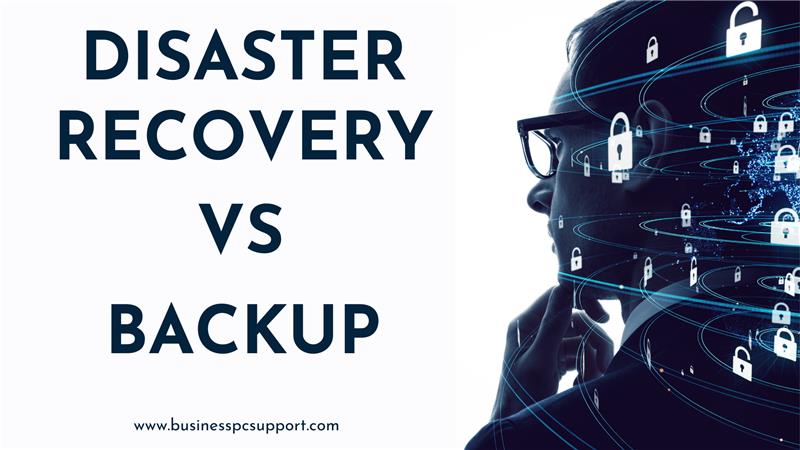Disaster Recovery vs. Backup: What’s the Difference?
When it comes to protecting your data, the terms “disaster recovery” and “backup” often come up. While they might seem similar, they serve different purposes. Understanding these differences is crucial, especially for businesses in Elk Grove and Sacramento looking to safeguard their operations.
Table of contents
What is Backup?
A backup is essentially a copy of your data. It’s like having a spare set of keys. You keep this copy in a secure location, separate from the original. If something goes wrong—like accidental deletion, hardware failure, or even a cyberattack—you can retrieve the data from your backup.
Why Backup Matters:
- Quick Data Restoration: If you lose a file or folder, you can easily restore it from your backup.
- Protection from Everyday Mishaps: Backups protect against data loss due to everyday errors, such as accidental deletions or software crashes.
- Basic Security Measure: It’s a fundamental step in any data protection strategy.
For example, a small business in Elk Grove might back up its customer database daily to ensure that even if the main system crashes, the data can be quickly restored with minimal disruption.
What is Disaster Recovery?
Disaster recovery (DR), on the other hand, is a more comprehensive plan that prepares your business to recover after a major disaster—think earthquakes, floods, or significant cyberattacks. It’s not just about having a backup; it’s about having a strategy in place to quickly resume critical business operations.
Key Components of Disaster Recovery:
- Comprehensive Plan: DR includes a step-by-step process for restoring IT systems, applications, and data after a disaster.
- Business Continuity: The goal is to minimize downtime and keep your business running smoothly, even in the face of a major disruption.
- Regular Testing: Disaster recovery plans are regularly tested to ensure they work when needed.
Consider a Sacramento-based company that experiences a flood. With a disaster recovery plan, they would not only retrieve their backed-up data but also quickly relocate operations to an unaffected area, restoring services to customers with minimal delay.
Backup vs. Disaster Recovery: The Key Differences
- Scope: Backup is about copying data; disaster recovery is about restoring business operations.
- Purpose: Backups protect against everyday data loss, while disaster recovery is about getting back on track after a significant disruption.
- Complexity: Disaster recovery involves more than just data—it includes people, processes, and infrastructure.
Why Your Elk Grove or Sacramento Business Needs Both
In regions like Elk Grove and Sacramento, where natural disasters like wildfires and floods are real threats, having both a solid backup plan and a disaster recovery strategy is essential. Backup ensures your data is safe, while disaster recovery ensures your business can keep operating, no matter what happens.
Final Thoughts
Investing in both backup and disaster recovery is not just a smart move; it’s a necessity for businesses in Elk Grove and Sacramento. By understanding the differences between these two strategies, you can better protect your business from data loss and ensure continuity during unexpected events.




Comments are closed